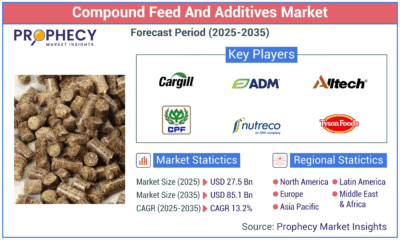Finance
How Regular Investors Are Accessing The Same Tools As Hedge Funds

82% of hedge funds already use alternative data in some form and fund managers are spending in excess of $1 billion a year on alternative data to beat the market.
This type of data is a wide assortment of data extracted from sources such as the internet, credit card histories, and satellite imagery. This broad-scope data used to be accessible only to well-heeled investors like hedge fund managers.
But in today’s world, it’s become essential for traditional asset managers who are struggling, in a low-cost passive investing world, to deliver returns that better the market. So what is alternative data and how is it changing things for regular investors?
Quantitative investing
Passive investing already accounts for as much as 45% of all assets for stock-based funds, up from 25% just a decade ago. With more investors opting for low-cost solutions like EFTs and passive mutual funds, actively managed funds are turning to new sources to supplement their databases. In this context, alternative data has come to the fore.
This integration of quantitative investing insights into fundamental-focused models isn’t only being driven by passive investing. Enabling tech is another factor behind alternative-data usage. For example, advanced machine-learning tools, sophisticated computer models, and accelerating computing power at ever-decreasing costs have made it possible to analyze and quickly process massive amounts of data.
Funds with alternative data teams
High profile investment companies like Schroders, Fidelity Investments, Capital Group, and Invesco have already invested in alternative-data teams. AlternativeData.org expects total spending by buy-side firms like mutual funds and hedge funds will exceed $1.7 billion in 2020, a major jump from just $232 million in 2016.
The industry trade group’s research also shows there are already as many as 445 alternative data providers servicing the growing demand, with Quandl, Orbital Insight, and Genscape as some of the best-known providers. 78% of funds already use or expect to use alternative data, up from 52% in 2016. Further, most of the data in circulation (90%) were created in the last two years.
At its broadest definition, alternative data is anything outside the usual government- or company-provided data, whether it’s on economic performance, earnings calls, or fundamental data sets.
How are hedge funds using alternative data?
Alternative data extracts data points like information on companies, brands, corporate activity, job listings, employee reviews, and product rankings from sources like the internet to inform investing decisions.
Data sources can be as exclusive as satellites and aerial surveillance or as public as news feeds and social media conversations. Credit card data, web data, and social/sentiment data are the three most valuable data categories according to research on data buyers.
Hedge fund use cases
Fund managers looked at aircraft-tracking data that revealed an Occidental Petroleum Corp. corporate jet had landed at Omaha airport. This led to speculation the oil giant was conferring with Buffett’s Berkshire Hathaway for assistance in acquiring Anadarko Petroleum Corp.
In this case, this highly specific piece of alternative data indeed gave investors an informational advance by accurately predicting the involvement of Berkshire Hathaway in Occidental’s acquisition. Buffett’s firm invested $10 billion in Occident just two days afterward.
However, satellite data could be used for more pedestrian ends, like tallying the number of cars in retailer car parks or identifying if manufacturers are adding shifts or downsizing workforces. This type of information would be used to assess company performance.
Web-scraping data sets, the most widely used form of alternative data, can track prices and inventory on eCommerce sites and offers hedge funds company-performance insights. Other internet-sourced data include social media sentiment that shed light on the strength of brands.
Additionally, fund managers have been willing to pay for credit-card data and data from point-of-sale systems, and again, these datasets provide direct sales and company-performance insights.
What the research says?
The research suggests firms investing in alternative data aren’t paying up in vain; 72% of investment firms believe alternative data has enhanced their signal quality and more than one-fifth said they had received more than 20% of their alpha (excess returns above market benchmarks) from it.
However, it’s vital to avoid unrealistic expectations. As an additional tool to complement fundamental analysis, alternative data can deliver valuable insights. But investment funds need to have effective tools in place to audit, filter out noise, and clean up the data.
Alternative data is here to stay. The big questions for investment firms could be how much they shell out for it, whether they have the right infrastructure in place to make use of it, and whether they do it in-house or outsource it.
-

 Press Release6 days ago
Press Release6 days agoGlobal Compound Feeds and Additives Industry Report: Market Expansion and Competitive Insights to 2035
-

 Technology6 days ago
Technology6 days agoWhat to Know Before Switching Cell Phone Network Services in 2025
-

 Press Release4 days ago
Press Release4 days agoCrypto WINNAZ Launches First On-Chain Yield Engine for Meme Coins, Enabling 20x–300x Returns
-

 Press Release1 day ago
Press Release1 day agoBellarium ($BEL) Price Prediction: Could It Hit $5 by 2026?
-

 Press Release1 day ago
Press Release1 day agoWhy Alaxio (ALX) Is a Top Pick for Smart Crypto Investors
-

 Business14 hours ago
Business14 hours agoHow Managed IT Solutions Help Small Teams Compete at Enterprise Scale












